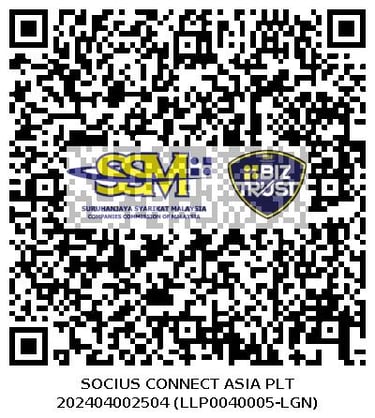Back in the Hot Seat: Malaysia Slapped with Another 25% U.S. Tariff Threat
Malaysia’s exporters face renewed challenges as the U.S. imposes new tariffs on key sectors, threatening competitiveness and trade flows. This article examines the impact on Malaysian businesses, practical strategies to adapt, and government efforts to support exporters amid shifting global trade dynamics.
STARTUPCORPORATESHAREHOLDERSENTREPRENEURLAWLEGALDISPUTEFINANCESOCIUS CONNECT ASIA LLPINCORPORATION IN ASIACOMPANY SET UP
7/9/20253 min read


Just when Malaysian exporters thought the worst was behind them, a fresh storm is brewing. The United States has imposed a new 25% tariff on selected Malaysian exports, effective August 1. This sudden announcement has sent shockwaves through key industries, threatening established trade flows and challenging Malaysia’s export-driven economy.
Understanding the Tariff and Its Purpose
This tariff is part of a broader U.S. strategy targeting 14 Asian countries, including Malaysia, Thailand, and Laos, with the latter two facing even higher tariffs. The U.S. government calls this initiative an effort to “rebalance” trade, aimed at reducing its large trade deficit by making imports more expensive and encouraging domestic manufacturing.
But what exactly is a tariff, and why does it matter? A tariff is a tax imposed on imported goods, which raises their price in the destination country. This price increase is designed to encourage consumers to buy domestic products instead. In this case, Malaysian exporters face an added 25% cost for their goods in the U.S., which can significantly reduce their competitiveness.
Why Malaysia Is Targeted
The U.S. targets Malaysia because of the substantial trade imbalance, where it imports much more from Malaysia than it exports in return. This imbalance, known as a trade deficit, is viewed by the U.S. as damaging to its economy and workforce. To address this, the U.S. is imposing tariffs to protect its industries and encourage local production.
Sectors Most at Risk
Several Malaysian sectors are particularly vulnerable. Electronics and electrical products, which constitute Malaysia’s largest export segment to the U.S., face new cost pressures. Furniture and wood products, rubber gloves and medical supplies, industries that have thrived recently, are also at risk. Steel and other manufactured goods with thin profit margins will likely feel the strain as well.
Impact on Malaysian Exporters
The immediate consequence of the tariff is a significant increase in the cost of Malaysian goods sold in the U.S. market. This makes Malaysian products less price-competitive compared to goods from countries not subject to tariffs, such as Vietnam, Mexico, and India. Some exporters have already halted shipments to the U.S. as they assess the impact.
Businesses may face order cancellations, delays, and cash flow challenges, while supply chains will require urgent reassessment to adapt to higher costs and changing demand patterns. For exporters, the situation demands swift and thoughtful action.
How Malaysian Exporters Can Respond
Facing this unexpected blow, Malaysian exporters must act quickly and strategically. Although it may be too late to avoid the immediate impact of these tariffs, businesses should focus on preventing similar shocks in the future. To navigate this new reality, exporters should diversify their markets beyond the U.S. Exploring opportunities within ASEAN countries, the Middle East, China, and Europe can reduce reliance on any single market. Enhancing product quality, driving innovation, and obtaining relevant certifications will strengthen competitiveness and help justify pricing even in the face of higher tariffs.
Optimizing supply chains is equally critical. Companies need to reassess sourcing and logistics to identify cost-saving opportunities or consider relocating production to countries not subject to tariffs. Maintaining close ties with industry associations and government agencies is vital to stay informed, seek possible exemptions, and access support programs.
Financial prudence also plays a key role. Exporters should prepare for potential cash flow fluctuations by negotiating flexible payment terms with buyers and carefully managing working capital.
Government and Regional Efforts
The Malaysian Ministry of Investment, Trade and Industry (MITI) is actively engaging U.S. counterparts to clarify tariff details and negotiate exemptions, especially for sensitive sectors such as semiconductors. Prime Minister Anwar Ibrahim has urged ASEAN countries to present a unified response to these unilateral trade measures, emphasizing regional cooperation in safeguarding economic interests.
Although support packages for small and medium-sized enterprises affected by the tariffs are under consideration, no formal relief has been announced.
Looking Ahead
While the 25% tariff poses a serious challenge, it also serves as a wake-up call for Malaysian exporters. Strengthening resilience through market diversification, product innovation, and supply chain agility will be key to overcoming this obstacle. Those who act decisively stand a better chance of not only surviving but emerging stronger in a rapidly changing global trade environment.
© SOCIUS CONNECT ASIA LLP
About us




202404002504 (LLP0040005-LGN)
